Development and role of air defense missile systems in the air defense system. Part 3
By the mid-60s, the USSR had successfully solved the problem of creating medium and short-range air defense systems, but taking into account the vast territory of the country, the formation of defense lines on probable flight paths aviation a potential adversary to the most populated and industrially developed regions of the USSR using these complexes turned into an extremely expensive undertaking. Particularly difficult would be the creation of such lines in the most dangerous northern direction, which was on the shortest way of approaching American strategic bombers.
The northern regions, even the European part of our country, were distinguished by a rare network of roads, low density of settlements, separated by vast spaces of almost impassable forests and marshes. A new mobile anti-aircraft missile system was required, with a greater range and height of target interception.
In 1967, the country's anti-aircraft missile defense forces received a “long arm” - the S-200A (Long-range anti-aircraft missile system C-200) with a range of 180 km and reach height 20 km. Subsequently, in more “advanced” modifications of this complex, C-200В and С-200Д, the target range was increased to 240 and 300 km, and reach was 35 and 40 km. Such a range and height of defeat inspire respect today.
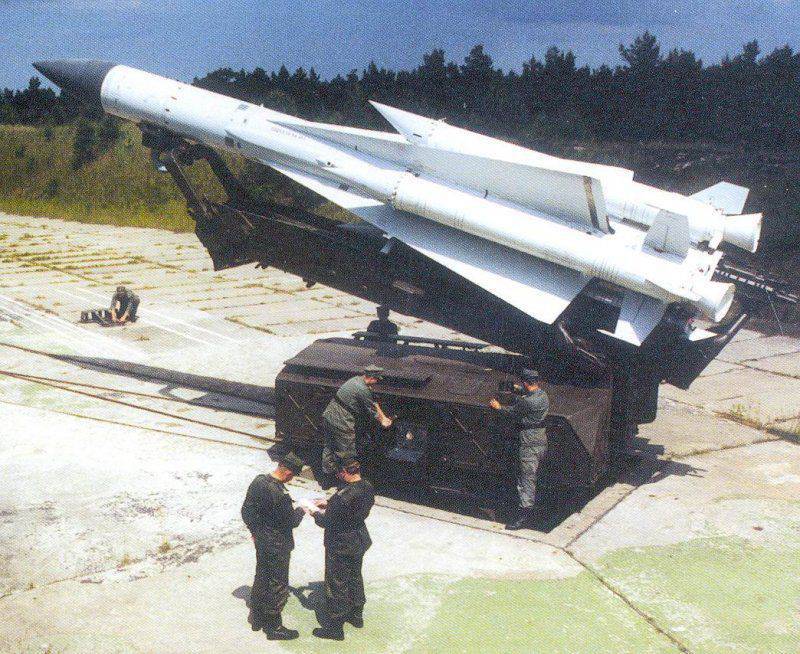
The C-200 anti-aircraft guided missile is a two-stage, made in the normal aerodynamic configuration, with four triangular wings of high elongation. The first stage consists of four solid-fuel boosters installed on the sustainer stage between the wings. The march stage is equipped with a two-component liquid-propellant rocket engine with a pumping system for supplying fuel components to the engine. Structurally, the main stage consists of a number of compartments in which a semi-active radar homing head, onboard equipment units, a high-explosive fragmentation warhead with a safety-actuating mechanism, tanks with fuel components, a liquid propellant rocket engine, rocket rudder control units are located.
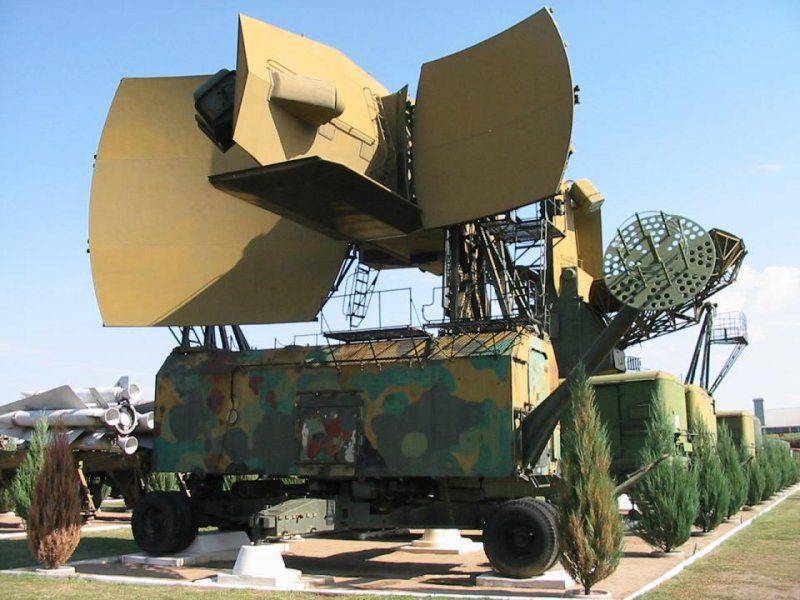
The target illumination radar (ROC) of the 4,5-cm range included an antenna post and a hardware cockpit and could operate in coherent continuous radiation mode, thus achieving a narrow spectrum of the probing signal, ensuring high noise immunity and the longest target detection range. At the same time, simplicity of execution and reliability of operation of the GOS were achieved.
To control the rocket on the entire flight path to the target, a “rocket-ROC” communication line was used with a low-power on-board transmitter on the rocket and the simplest receiver with a wide-angle antenna on the ROC. In the C-200 SAM system, a digital computer was first introduced in the digital computer, which was assigned the task of exchanging command and coordinate information with various controls and before solving the start-up problem.
The launch of the rocket is oblique, with a constant angle of elevation, with a launcher, induced in azimuth. The warhead weighing about 200 kg is a high-explosive fragmentation warhead with ready striking elements - 37 thousand units weighing 3-5 g. When the warhead explodes, the fragmentation angle is 120 °, which in most cases leads to a guaranteed defeat of the air target.
The C-200 mobile fire system consisted of a command post, firing channels and power supply system. The firing channel included a target illumination radar and a launch position with six launchers and 12 charging machines. The complex had the opportunity without reloading launchers to produce sequential shelling of three air targets with ensuring simultaneous homing on each target of two missiles.
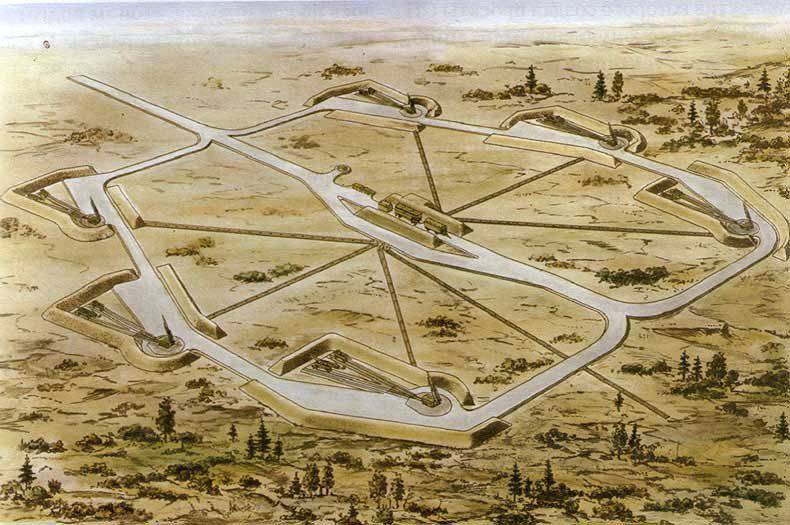
As a rule, C-200 was deployed in prepared positions with permanent concrete structures and earthen bulk cover. This made it possible to protect equipment (except antennas) from fragments of ammunition, small and medium caliber bombs, aircraft cannon projectiles during enemy air raids directly on the combat position.
To increase the combat stability of long-range anti-aircraft missile systems C-200, it was considered expedient to combine them under a single command with low-altitude systems of the C-125 system. Anti-aircraft missile brigades of mixed composition began to form, including C-200 with six launchers and two or three C-125 anti-aircraft missile divisions.
Already from the beginning of the C-200 deployment, the very fact of its existence became a weighty argument that determined the transition of the potential enemy’s aircraft to operations at low altitudes, where they were exposed to the fire of more massive anti-aircraft missile and artillery weapons. LAW C-200 significantly devalued long-range bomber carriers of cruise missiles. In addition, the undeniable advantage of the complex was the use of homing missiles. At the same time, even without realizing their capabilities in range, C-200 supplemented C-75 and C-125 complexes with radio command guidance, significantly complicating for the enemy the tasks of conducting both electronic warfare and altitude intelligence. Especially clearly the advantages of C-200 over these systems could manifest themselves in the shelling of active jammers, which served as an almost ideal target for self-guided C-200 missiles. As a result, for many years reconnaissance aircraft of the United States and NATO countries were forced to make reconnaissance flights only along the borders of the USSR and the Warsaw Pact countries. The presence of various modifications of the C-200 long-range anti-aircraft missile systems in the USSR air defense system made it possible to reliably close the airspace on the near and far approaches to the country's air border, including the famous SR-71 "Black Bird" reconnaissance aircraft. Currently, the C-200 air defense missile system of all modifications, in spite of the high modernization potential available and the firing range unmatched before the advent of the C-400 air defense missile system, has been removed from service of the RF air defense system.
ZRK C-200В for export was supplied to Bulgaria, Hungary, GDR, Poland and Czechoslovakia. In addition to the Warsaw Pact countries, Syria and Libya, the C-200ВЭ system was shipped to Iran (in 1992) and to North Korea.
One of the first buyers of C-200BE was the leader of the Libyan revolution, Muammar Gaddafi. Having received such a “long arm” in 1984, he soon stretched it over Sirte Bay, declaring the waters of Libya’s territorial waters a little less than Greece. With the grim poetics of Ghaddafi peculiar to the leaders of developing countries, he declared the 32 parallel to the Gulf the “death line”. In March, 1986, in the exercise of the claimed rights, Libyans fired C-200BE missiles at three aircraft from the American aircraft carrier Saratoga, which defiantly patrolled international waters.
What happened in the Gulf of Sirte was the reason for the operation "Canyon Eldorado", during which at night 15 on April 1986, several dozen American planes attacked Libya, and primarily the residences of the Libyan revolution leader, as well as the positions of the C-200VE and C-75. It should be noted that in organizing the supply of the C-200VE system to Libya, Muammar Gaddafi offered to organize the maintenance of technical positions by the forces of Soviet military personnel. In the course of recent events in Libya, all C-200 air defense systems in this country were destroyed.
Unlike the United States, in European countries, NATO members in 60-70-s paid great attention to the creation of mobile short-range air defense systems capable of operating in the front line and accompanying troops on the march. First of all it concerns Great Britain, Germany and France.
At the beginning of the 1960-s in the UK, the development of the Rapier short-range air defense system began, which was considered as an alternative to the American MIM-46 Mauler, the declared characteristics of which were in serious doubt among US allies in NATO.
It was supposed to create a relatively simple and inexpensive complex with a short reaction time, the ability to quickly take up a combat position, with compact placement of equipment, small weight and size characteristics, high firing speed and the likelihood of hitting the target with one rocket. For aiming the missile at the target, it was decided to use a well-developed radio command system, previously used in the Siket sea complex with a range of 5 km, and its not very successful land version of Taygerket.

The radar complex "Rapira" provides a view of the area of space where it is assumed the finding of the target and captures it for tracking. The radar method of tracking the target occurs automatically and is the main one; in case of interference or for other reasons, it is possible that the operator must manually guide the aircraft using the optical system.
The optical device for tracking and guiding the Rapira air defense missile system is a separate unit that is mounted on a remote tripod, at a distance of up to 45m from the launcher. Accompanying the target with an optical system is not automated and is carried out manually by the operator of the complex using a joystick. The missile guidance is fully automated, the infrared tracking system captures the missile after launch in a wide field of view in 11 °, and then automatically switches to the 0,55 ° field of view when the missile is aimed at the target. Accompanying the target by the operator and the tracer of the missile defense system with an infrared direction finder allows the counting-decisive device to calculate the missile guidance commands using the “target cover” method. These radio commands are transmitted by the command transmission station aboard the SAM. The firing range of the SAMs is 0,5-7 km. The height of the destruction of the target - 0,15-3 km.
Such a missile targeting system to the target seriously simplified and cheapened the Zour and air defense missile systems as a whole, but limited the capabilities of the complex in terms of direct visibility (fog, haze) at night. Nevertheless, the Rapier air defense system was popular, from 1971 to 1997, more than 700 launchers of towed and self-propelled variants of the Rapier complex and 25000 missiles of various modifications were produced. About 12 000 missiles were spent over the past period in tests, exercises and combat operations.
The reaction time of the complex (the time from the moment of detecting the target to the launch of the rocket) is about 6 s, which has been repeatedly confirmed by live firing. Four missiles are loaded by a trained combat crew in less than 2,5 minutes. In the British Army, elements of the Rapier complex are usually towed by a Land Rover all-terrain vehicle.
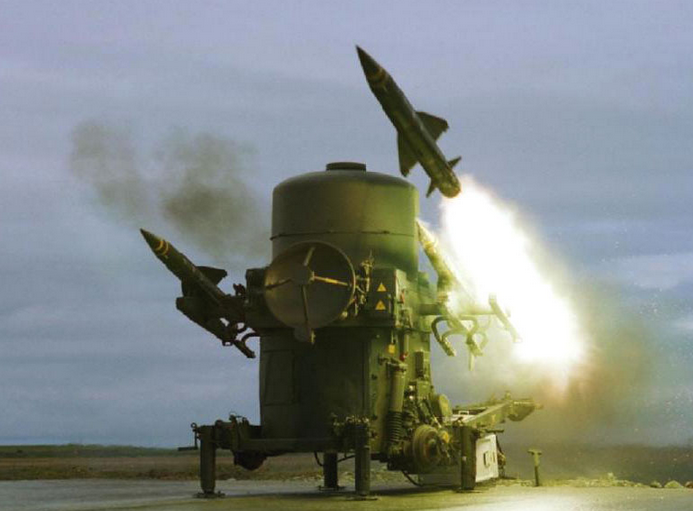
The “Rapier” air defense missile system was repeatedly upgraded and delivered to Australia, Oman, Qatar, Brunei, Zambia, Switzerland, Iran, Turkey. The US Air Force purchased the 32 complex for the air defense system of American air bases in the UK. As part of the 12 th air defense regiment of Great Britain, the ZRK participated in combat operations during the Falklands 1982 conflict of the year. From the first day of the English landing on the Falkland Islands, 12 launchers were deployed. The British claimed that Rapier had destroyed 14 Argentinian aircraft. However, according to other information, the complex shot down only one Dagger aircraft and participated in the destruction of the A-4S Skyhawk aircraft.
Almost simultaneously with the British complex "Rapier" in the USSR, the mobile all-weather SAM "Osa" was adopted (Combat "OCA"). In contrast to the British originally towed complex, the Soviet mobile air defense system, according to the terms of reference, was designed on a floating chassis and could be used in poor visibility conditions at night. This self-propelled air defense missile system was designed for air defense of troops and their objects in combat formations of a motorized rifle division in various forms of combat, as well as on the march.
The requirements imposed on the “Osa” by the military were complete autonomy, which would be provided by the location of fixed assets of the air defense missile system - a detection station, a launcher with missiles, communications, navigation, toporavidka, control and power sources on one self-propelled floating wheel chassis. The ability to detect in motion and damage from short stops suddenly appearing from any direction low-flying targets.
In the original version, the complex was installed 4 openly located on the PU rockets. Modernization of the air defense system began almost immediately after its adoption into service in 1971. Subsequent modifications, Osa-AK and Osa-AKM, have 6 missiles in transport-launch containers (TPK).
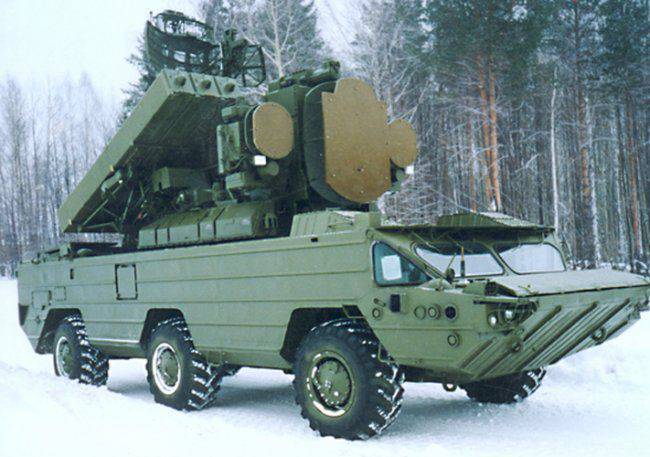
The main advantage of the Osa-AKM air defense missile system, which was put into service in 1980, was the possibility of effective destruction of helicopters stuck or flying at an ultra-low altitude, as well as small RPVs. In the complex, a radio command circuit is used for targeting missiles at a target. The range of damage in range is 1,5-10 km, and in height 0,025-5 km. The probability of hitting the target of one Zour - 0,5-0,85.
The “Osa” air defense system of various modifications is in service in more than 20 countries and took part in many regional conflicts. The complex was built serially until 1988, during which time more than 1200 units were transferred to customers, currently in the air defense units of the ground forces of the Russian Federation and there are more than 300 air defense missile systems of this type in storage.
The French mobile Crotale is in many ways similar to the “Osa” air defense system in which the radio command principle of targeting the missiles to the target is also applied. But unlike the “Wasps” on the French complex, the SAM and radar detection are placed on different combat vehicles, which of course reduces the flexibility and reliability of the air defense system.
History This air defense complex began in 1964, when South Africa signed a contract with the French company Thomson-CSF to create a mobile all-weather air defense complex designed to destroy targets flying at low and extremely low altitudes.
Starting from 1971, the complexes that received the name Cactus were delivered to South Africa within two years. In general, South Africans used these air defense systems for the defense of air bases. The main combat unit is a battery consisting of a command and control station with a detection radar and two combat vehicles with guidance stations (each carrying 4 missiles weighing more than 80 kg each). Starting in 1971, South Africa has purchased 8 radar and 16 missiles.
After the successful implementation of the contract with South Africa, the French military also expressed a desire to adopt a mobile air defense system. In 1972, a complex called Crotale was adopted by the French Air Force.
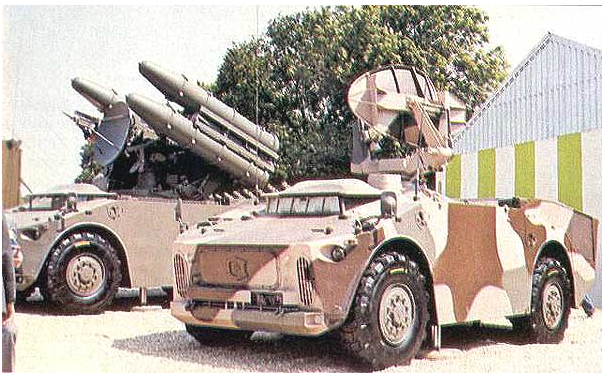
Combat vehicles of the Krotal complex are mounted on the P4R armored chassis (4х4 wheel formula), a typical platoon consists of a command and control center and 2-3 launchers.
A command and control center reviews the airspace, detects a target, recognizes its nationality and recognizes its type. Pulse-Doppler radar detection Mirador-IV is mounted on top of the chassis. It is capable of detecting low-flying targets at a distance of 18,5 km. Data on the target using communications equipment is transmitted to one of the launchers, where there are combat-ready missiles. The launcher mounted monopulse radar targeting missiles with the far border of the detection zone to 17 km and 4 container for missiles. A guidance radar can accompany one target and direct up to two missiles simultaneously with a launch range of 10 km and an altitude range of 5 km.
On the first versions of the complex, after the march was completed, cable docking of the command and control center and launchers was necessary. After adopting the complex has been repeatedly upgraded. Beginning with 1983, a variant is being produced on which radio communications equipment appeared, providing information exchange between combat control points at a distance of up to 10 km and up to 3 km between the combat control point and the launcher. All chassis are combined into a radio network, it is possible to transfer information to the launcher not only from the command and control point, but also from another launcher. In addition to a significant reduction in the time of bringing the complex into combat readiness and increasing the distance between the command and control center and launchers, its noise immunity increased. The complex was able to conduct combat operations without radar radiation — with the help of a thermal imager, which accompanies target tracking and missiles in both day and night conditions.
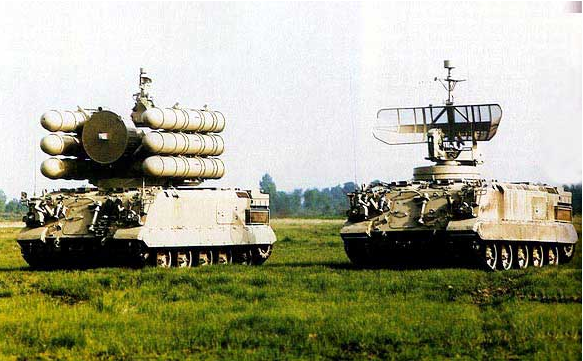
Krotal was supplied to Bahrain, Egypt, Libya, South Africa, South Korea, Pakistan and other countries. In 1975, Saudi Arabia ordered a modernized version of the complex on a tracked chassis tank AMX-30, named Shanine.
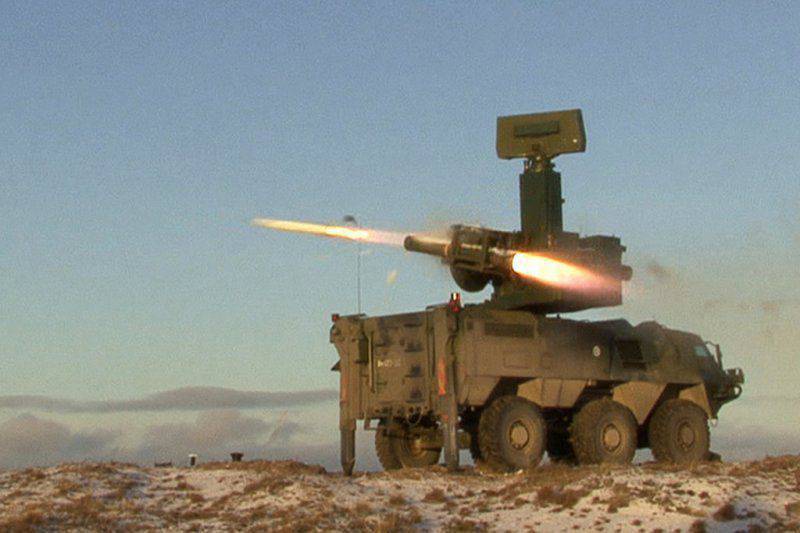
Currently, potential buyers of the complex Crotale-NG, which has the best performance characteristics and noise immunity (French ZRK "Crotale-NG").
In the middle of 60, representatives of Germany and France concluded an agreement to jointly develop the Roland self-propelled air defense system. It was intended for the air defense of mobile units in the front line and for the defense of important stationary objects in the rear of their troops.
The coordination of the TTX and the refinement of the complex dragged on, and the first combat vehicles began to enter the troops only in 1977 year. In the Bundeswehr, the Roland air defense missile system was located on the chassis of the Marder infantry fighting vehicle, in France the carriers of the complex were the chassis of the AMX-30 medium tank or on the chassis of the 6xXNNXX ACMAT truck. The launch range was 6 km, the height of the target hit was 6,2 km.
The main equipment of the complex is arranged on a universal rotating tower installation in which a radar antenna for detecting air targets, a radio command station aboard the SAM, an optical sight with a heat finder, and two TLCs with radio command missiles are located. The total ammunition of the air defense missile system on a combat vehicle can reach 10 missiles, the weight of the equipped TPK is 85 kg.
Aerial target radar is capable of detecting targets at a distance of up to 18 km. The Roland-1 SAM missile is guided by an optical sight. An infrared direction finder mounted in the scope serves to measure the angular mismatch between the flying missile and the optical axis of the sight, directed by the operator to the target. To this end, the direction finder automatically accompanies the rocket tracer, transmitting the results to the computing decisive guidance device. The calculating device generates commands for pointing the missile defense according to the method of “covering the target”. These commands are transmitted via the antenna of the radio command transmission station onboard the missile defense system.
The original version of the complex was semi-automatic and not all-weather. Over the years of service, the complex has been repeatedly upgraded. In 1981, the all-weather Roland-2 air defense system was adopted and a modernization program was completed for a part of the previously manufactured complexes.
In order to increase the capabilities of military air defense in 1974, in the United States, a competition was announced to replace the Chaparrel air defense system. As a result of a contest held between the British Rapier air defense system, the French Crotal and the French-German Roland, the latter won.
It was supposed to adopt and establish licensed production in the United States. As a base, the M109 self-propelled howitzer chassis and a three-axle army 5-ton truck were considered. The latter option made it possible to make the air defense system airborne on the military transport C-130.
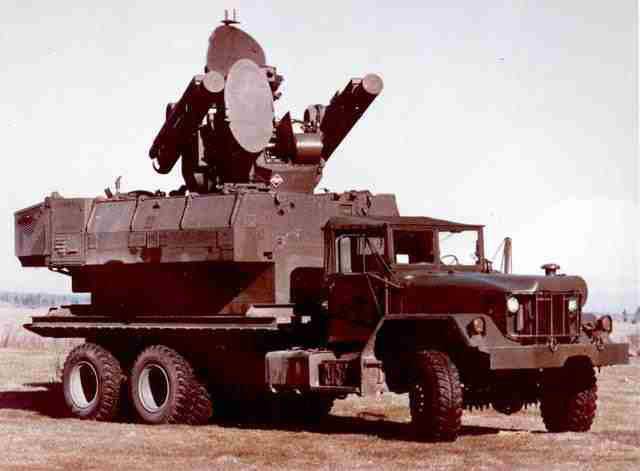
Adaptation of the air defense system to American standards included the development of a new target designation radar with increased range and better noise immunity, and a new missile. At the same time, unification with the missiles of the European air defense systems continued: French and German Rolands could shoot American missiles, and vice versa.
Total planned to release 180 ZRK, but because of financial constraints, these plans did not come true. The reasons for the closure of the program were excessively high costs (about 300 million dollars only for R & D). Total time to release 31 ZRK (4 tracked and 27 wheeled). In 1983, the only division of the Rolands (27 ZRK and 595 missiles) was transferred to the National Guard, in the 5 division of the 200 regiment of the 111 brigade of the air defense, New Mexico. However, there they also did not stay long. Already in September, because of the high operating costs of the Roland, the 88 was replaced with the Chaparrel air defense system.
However, starting from 1983, the Roland-2 air defense system was used to cover American bases in Europe. 27 ZRK on the automobile chassis from 1983 to 1989 year were on the balance of the US Air Force, but served by German calculations.
In 1988, the advanced automatic Roland-3 was tested and put into production. The Roland-3 SAM system provided the opportunity to use not only all the Roland family anti-aircraft missiles, but also the VT1 hypersonic missile (part of the Crotale-NG SAM), as well as the new promising Roland Mach 5 and HFK / KV missiles.
The upgraded Roland-3 rocket compared to the Roland-2 rocket has an increased flight speed (570 m / s as compared to 500 m / s) and a strike distance (8 km instead of 6,2 km).
The complex is mounted on different chassis. In Germany, it is installed on the chassis of the 10-ton MAN off-road truck (8x8). The air transport version, which received the designation Roland Carol, was put into service in 1995.
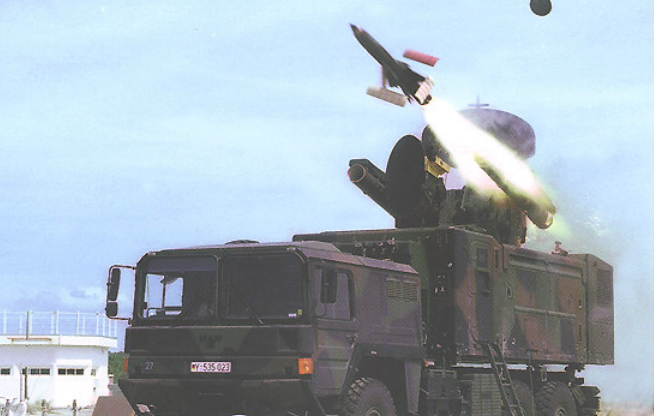
In the French army, the air defense system Roland Carol is located on a semi-trailer towed by an ACMAT off-road vehicle (6x6), in the Armed Forces of the Federal Republic of Germany it is installed on the MAN chassis (6x6). Currently, Roland Carol is in service with the French army (20 ZRK) and the German Air Force (11 ZRK).
In 1982, Argentina will use the stationary version of the Roland complex to protect Port Stanley from air strikes of the British naval aviation. It was released from 8 to 10 missiles, information about the effectiveness of the use of the complex in this conflict is rather contradictory. According to French origin, Argentines shot down 4 and damaged 1 Harrier. However, according to other information, only one aircraft can be recorded as an asset of this complex. Iraq also used its complexes in the war against Iran. In 2003, the Roland’s Iraqi missile shot down one American F-15E.
In 1976, in the USSR, the Strela-1 complex on the basis of MT-LB was adopted for the replacement of the Strela-10 regimental air defense system. Regimental self-propelled anti-aircraft missile system "Strela-10"). The machine has a low specific pressure on the ground, which allows it to move on roads with low bearing capacity, through swamps, virgin snow, sandy terrain, and the machine can also swim. In addition to 4 SAM, placed on the launcher, the combat vehicle allows you to carry additional 4 missiles in the body.
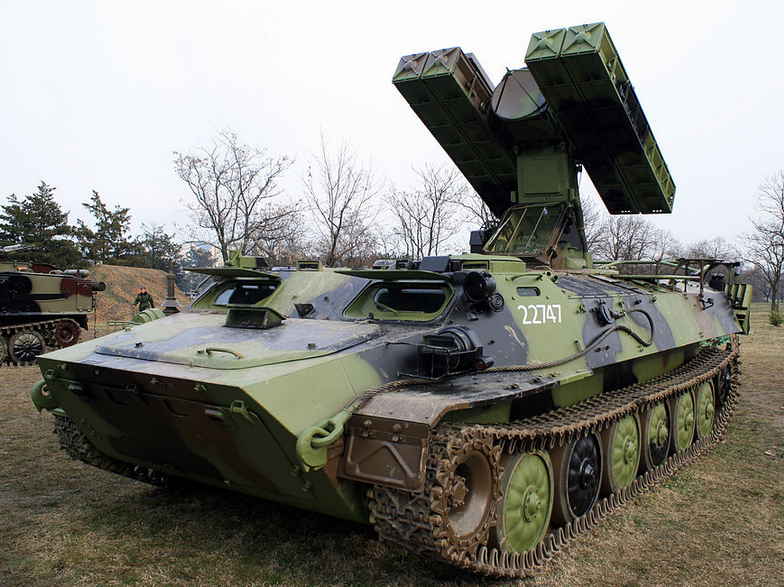
Unlike the Arrows-1 SAM, the homing head (GOS) of the Strela-10 SAM utilizes dual channel mode and provides guidance using the proportional navigation method. A photocontrast and infrared channel is used, which ensures shelling of targets in the conditions of interference, on oncoming and catch-up courses. This greatly increased the chance of hitting an air target.
In order to increase the combat capabilities of the complex, it has been repeatedly upgraded. After the revision of the guided missile with a new engine, an enlarged warhead and a seeker with three receivers in different spectral ranges, the rocket complex in 1989 was adopted by the SA called Strela-10М3. The strike zone "Strela-10М3" in range from 0,8 km to 5 km, in height from 0,025 km to 3,5 km /. The probability of hitting a fighter with one guided missile - 0,3 ... 0,6.
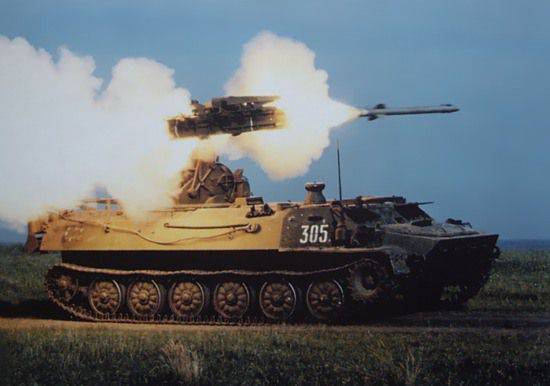
The SAIL of the Strela-10 family is in the armed forces of more than 20 countries. He repeatedly demonstrated his rather high combat effectiveness at ranges and in the course of local conflicts. Currently, he continues to be in service with air defense units of the ground forces and marines of the Russian Federation in the amount of at least 300 units.
By the beginning of 70, by trial and error, the main classes of air defense systems were created in the “metal”: long-range stationary or semi-stationary complexes, medium-range transportable or self-propelled and low-altitude, as well as mobile anti-aircraft systems operating directly in battle formations of troops. Design practices, operating experience and combat use received by the military during regional conflicts have identified ways to further improve the air defense system. The main areas of development were: increasing combat survivability due to mobility and reducing the time to combat and coagulation, improving noise immunity, automating the control systems and air defense missile systems. Progress in the field of semiconductor elements allowed to radically reduce the mass of electronic components, and the creation of energy efficient recipes for solid fuels for TTRD made it possible to abandon liquid propellant rocket engines with toxic fuel and caustic oxidizer.
To be continued ...
Based on:
http://www.army-technology.com
http://rbase.new-factoria.ru
http://geimint.blogspot.ru/
http://www.designation-systems.net/
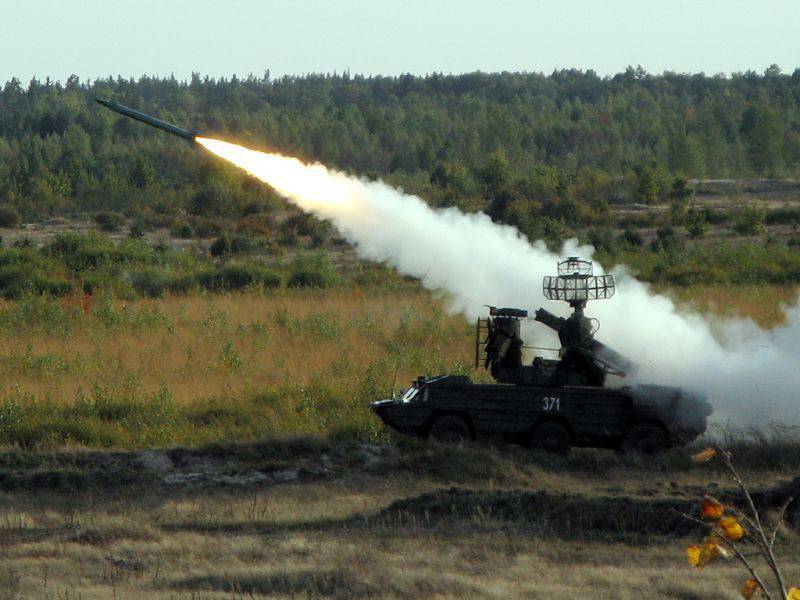
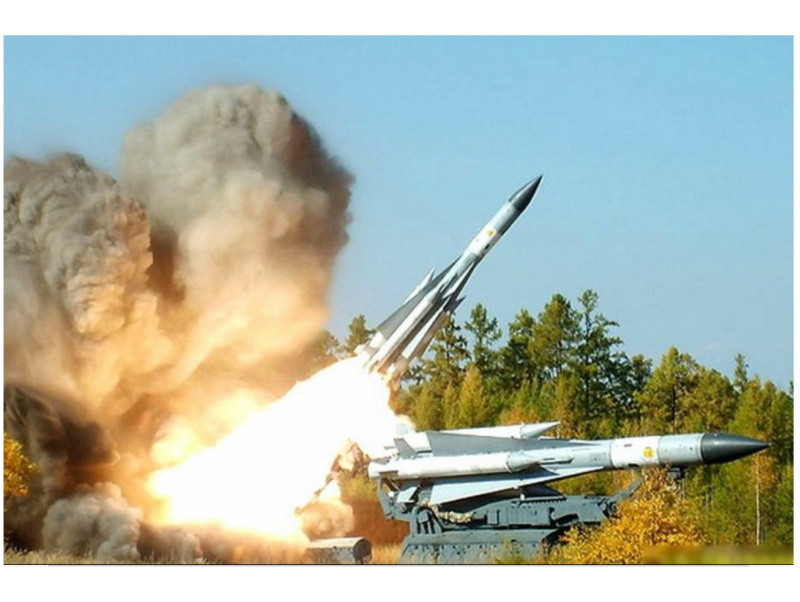
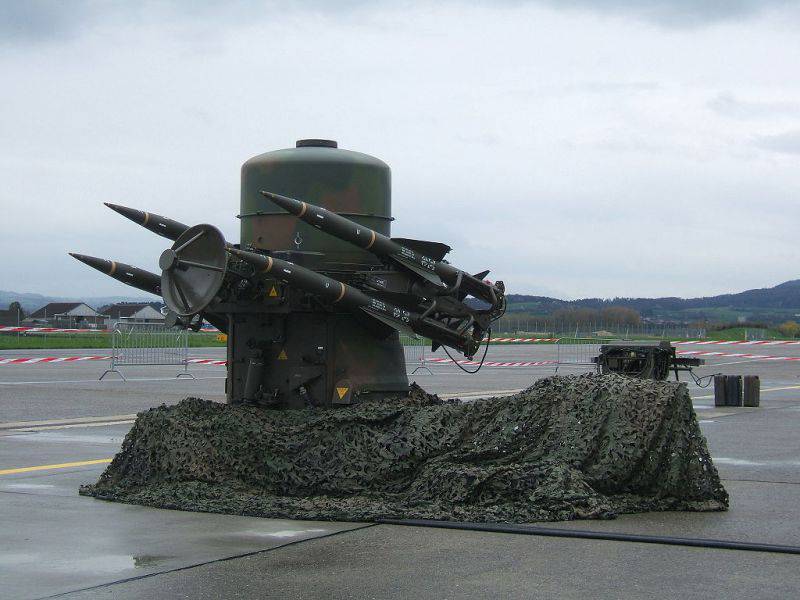
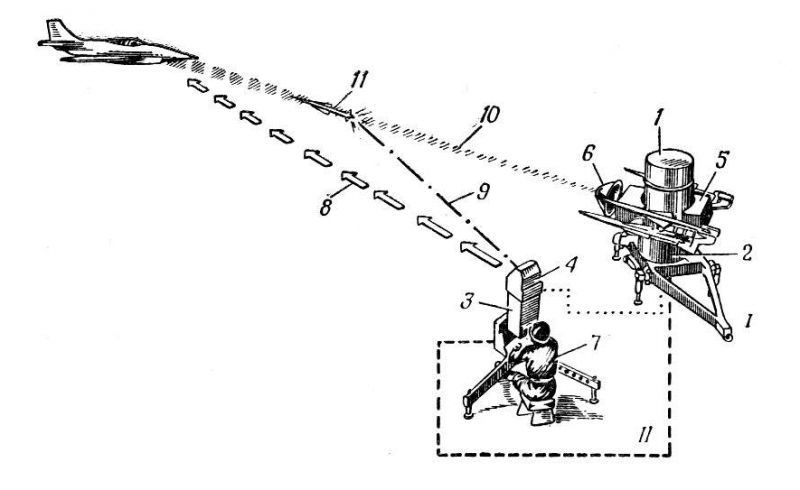
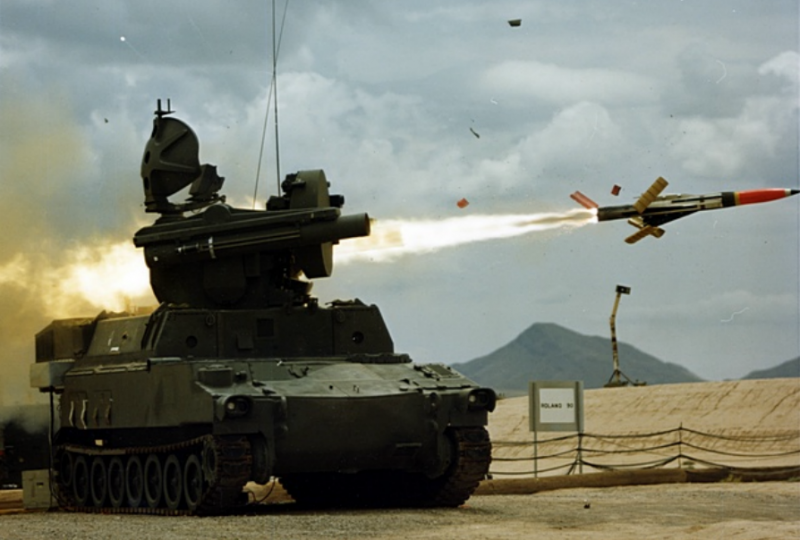
Information